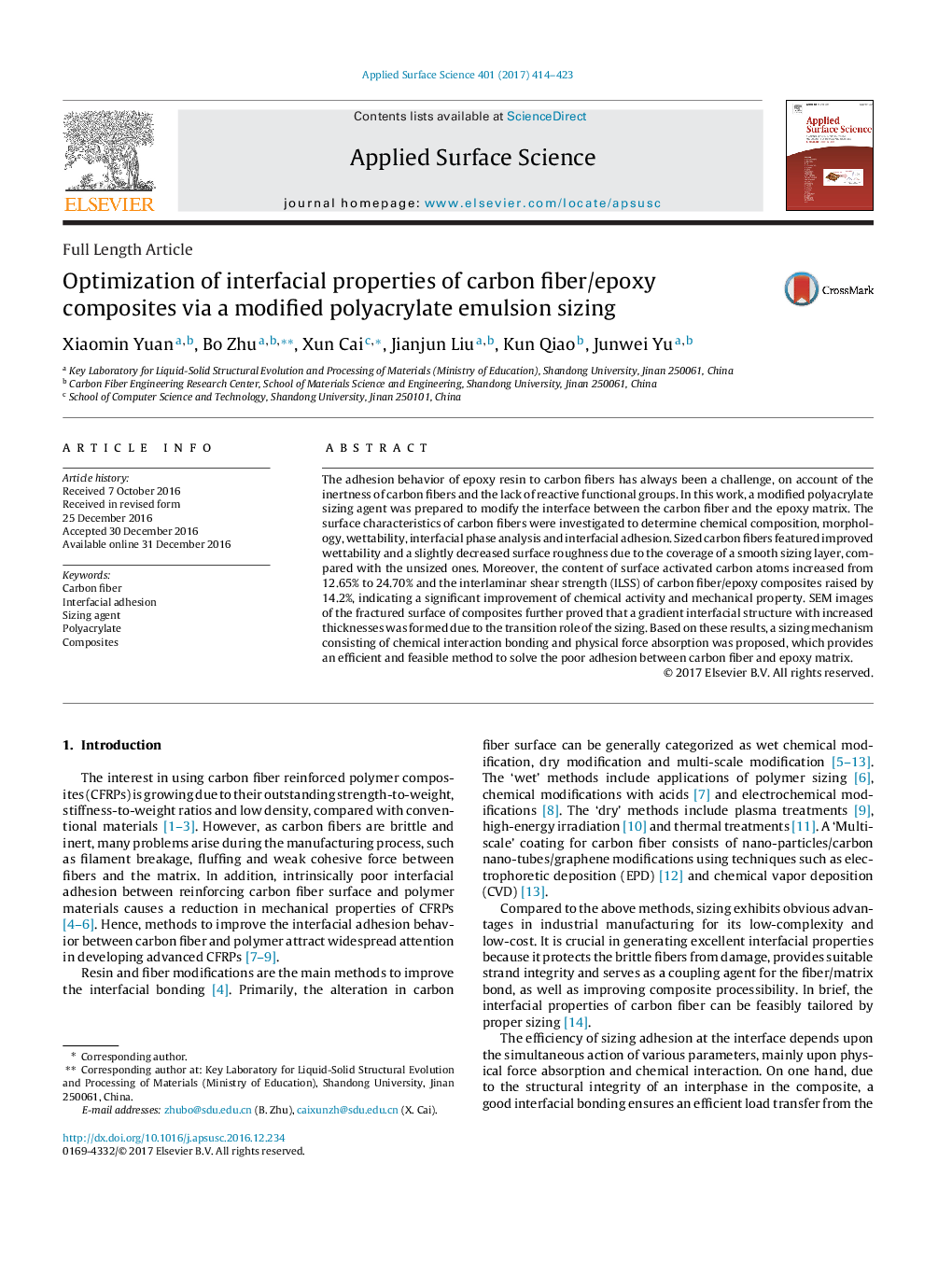| Article ID | Journal | Published Year | Pages | File Type |
|---|---|---|---|---|
| 5352824 | Applied Surface Science | 2017 | 10 Pages |
â¢An improved interfacial adhesion in CF/EP composite by FSMPA sizing was put forward.â¢Sized CFs featured promotions of wettability, chemical activity and mechanical property.â¢A sizing mechanism containing chemical interaction and physical absorption was proposed.
The adhesion behavior of epoxy resin to carbon fibers has always been a challenge, on account of the inertness of carbon fibers and the lack of reactive functional groups. In this work, a modified polyacrylate sizing agent was prepared to modify the interface between the carbon fiber and the epoxy matrix. The surface characteristics of carbon fibers were investigated to determine chemical composition, morphology, wettability, interfacial phase analysis and interfacial adhesion. Sized carbon fibers featured improved wettability and a slightly decreased surface roughness due to the coverage of a smooth sizing layer, compared with the unsized ones. Moreover, the content of surface activated carbon atoms increased from 12.65% to 24.70% and the interlaminar shear strength (ILSS) of carbon fiber/epoxy composites raised by 14.2%, indicating a significant improvement of chemical activity and mechanical property. SEM images of the fractured surface of composites further proved that a gradient interfacial structure with increased thicknesses was formed due to the transition role of the sizing. Based on these results, a sizing mechanism consisting of chemical interaction bonding and physical force absorption was proposed, which provides an efficient and feasible method to solve the poor adhesion between carbon fiber and epoxy matrix.
